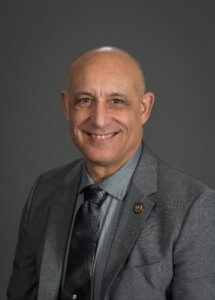Brian Ursino, Director of Law Enforcement
American Association of Motor Vehicle Administrators
Assistant Chief, Washington State Patrol (retired)
A person who has “bought into” the mission statement of their employer conducts themselves consistently with that mission statement. But what happens if that person works for a law enforcement agency whose mission is impacted by external factors, such as political influences? I will come back to that question.
I served for 30-years with the Washington State Patrol (WSP), ascending the ranks from trooper to assistant chief. Since March 2010, I have served as the director of law enforcement programs for the American Association of Motor Vehicle Administrators (AAMVA). Founded in 1933, AAMVA represents state, provincial, and territorial officials in the United States and Canada who administer and enforce motor vehicle laws. What that means more specifically, is that every motor vehicle agency (MVA or DMV) and every state and provincial law enforcement agency in North America is an AAMVA member.
From 2008 to 2014, a period overlapping my time with the WSP and AAMVA, I served on the MADD National Board of Directors. In 2013, I chaired the MADD Board’s Strategic Planning Subcommittee which produced MADD’s first strategic plan that incorporated the fight against drugged driving to MADD’s mission statement. Why did MADD elect to expand its mission? We recognized that poly drug-use (combination of alcohol with other drugs) was growing more prevalent and we could no longer address alcohol impaired driving as an isolated issue – any impaired driving is impaired driving.
Crash data shows that the most common poly drug-use combination is alcohol with marijuana (cannabis). Predictably, with more and more states legalizing recreational marijuana, crashes involving drivers impaired by marijuana alone or marijuana in combination with alcohol are increasing. Washington and Colorado were the first two states to legalize recreational marijuana. Data from the Washington Traffic Safety Commission (WTSC) in 2016 demonstrates that the percentage of drivers involved in fatal crashes who tested positive for cannabis increased by more than 100% from 2010 (pre-legalization) to 2014 (post-legalization).
The complexity of policing has grown exponentially since I began my career in 1980. Today, law enforcement is grappling with multiple issues that erupted in the aftermath of the May 25, 2020 death of George Floyd and from subsequent protests and riots nationwide. The ensuing months have brought public and political backlash with widespread calls for police reform and for defunding of police. Unfortunately, I see calls for police reform AND defunding the police as an oxymoron. True police reform will require investment in every system that drives a law enforcement agency’s culture – from hiring, training and evaluation processes, to equipment (such as body cams) and much more. It is critical that adequate funding remains for all these areas to properly train officers in fair and just traffic safety enforcement and education.
Back to mission. When law enforcement administrators are required to reduce their agency budget, often among the first casualties are specialized traffic units, DUI squads, and educational outreach programs, just to name just a few. Officers who may have been fully engaged in traffic law enforcement – and more specifically impaired driving education and enforcement – are finding their past work priorities falling out of alignment with the mission when their agencies are forced to cut (or worse eliminate) impaired driving education and enforcement activities.
What can an individual officer do? First, I doubt you are alone. Trust that there are like minded officers throughout your agency (and chain of command) who are frustrated by mission confusion. Band together. Know the data – are your impaired driving crashes, injuries, and fatalities rising? Without wandering outside the lines of agency policy, officers can be a constructive part of the media narrative that shapes public opinion.
Engage with your local MADD office volunteers, partners from your state’s office of highway safety, and other interested stakeholders to ensure your elected officials know that reducing police budgets is not serving their constituencies well. Every state has a strategic highway safety plan, and many of those plans include a Target Zero or Vision Zero initiative calling for zero traffic fatalities by a specific year. Just one proven strategy that every plan I have seen contain is targeted traffic law enforcement with impaired driving education and enforcement as a key component of the plan. Is your state on track to meet its injury and fatality reduction milestones? If not, hold your elected officials accountable. Those goals cannot be met if police agencies are having their funding slashed.
Only working together as a collective can we ensure A Future of No More Victims!


